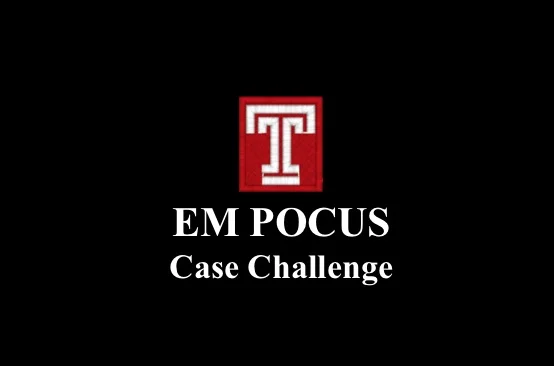25 year old female presented with gradual onset of right lower quadrant pain associated with nausea and vomiting x 1 day. On physical exam, she had RLQ tenderness to palpation. Bedside ultrasound was performed and showed the following. What is the diagnosis and the appropriate next step in work up?
Answer: appendicitis. Skip the CT scan and call surgery next!
This video shows:
- a non-compressible, tender appendix
- appendix dilated (diameter >6 mm)
Pearls:
To locate the appendix, use either the high-frequency linear (vascular) probe or the curvilinear (abdominal) probe, depending on body habitus. You can start in the RLQ, locate the colon in the transverse position and scan down towards the RLQ, applying deep compression to displace bowel gas. You may then visualize the appendix arising from the cecum. You can also start in the RLQ at the point of maximal tenderness. The appendix appears as a tubular, blind-ended pouch near the psoas muscle and iliac vessels. Findings consistent with appendicitis: diameter >6mm, non-compressible, appendix wall thickness >3mm. You may also visualize an appendicolith or peri-appendiceal free fluid.
There is not yet extensive data on the diagnosis of appendicitis by bedside ultrasound in the ED, but studies done so far show a high specificity (~98.5%) and a sensitivity around 68%. If you have a high clinical suspicion for appendicitis and a + EMBU, call surgery - you can make a strong case for no CT scan. However, if you are unable to visualize the appendix, this is an indeterminate study and you have not ruled out appendicitis.
Pitfalls:
It can be difficult to visualize the appendix - normal appendices are harder to see than inflamed ones. Small bowel can be mistaken for the appendix, so be sure to visualize the blind, tubular end of the appendix. Bowel gas, patient habitus etc. can limit your exam. You will not be able to visualize a retrocecal appendix.
-Allison Zanaboni, MD, Emergency Medicine Ultrasound Fellow
Bachur et al. Effect of Reduction in the Use of Computed Tomography of Clinical Outcomes of Appendicitis. JAMA Pediatr. 2015 Aug;169(8):755-60
Malin et al. Diagnoses of appendicitis by bedside ultrasound in the ED. Am J Emerg Med. 2015 Mar;33(3):430-2
